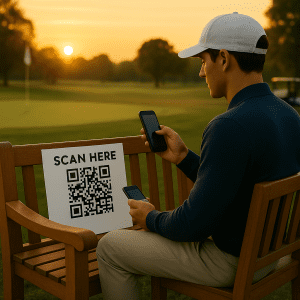In today’s fast-paced digital landscape, viral marketing has become a go-to strategy for brands looking to achieve rapid visibility and engagement. While creating a viral campaign can lead to an explosion in shares, likes, and media coverage, the bigger question remains: What is the long-term impact of viral marketing on a brand?
Many companies get caught up in the immediate success of virality, focusing on short-term gains while overlooking long-term brand growth. This article explores how marketing professionals can measure the sustained effects of viral marketing, looking beyond vanity metrics to assess brand loyalty, customer retention, and revenue growth.
The Difference Between Short-Term and Long-Term Viral Success
Viral marketing often generates instantaneous success, but for a brand to truly benefit, there must be a way to sustain that momentum. Here’s how short-term and long-term success differ:
Short-Term Viral Success
1. High engagement rates (likes, shares, comments)
2. Increased website traffic and social media followers
3. Temporary sales boost 
4. Media and influencer coverage
Long-Term Brand Impact
1. Brand awareness that persists beyond the campaign
2. Customer retention and repeat purchases
3. Brand reputation and trust-building
4. Sustainable revenue growth from acquired customers
5. Understanding these differences helps agencies craft viral campaigns that contribute to lasting brand value rather than fleeting popularity.
Key Metrics for Measuring Long-Term Viral Marketing Impact
To assess whether a viral marketing campaign has a lasting impact, marketing professionals need to look at the right key performance indicators (KPIs):
Brand Recall and Awareness
1. Conduct post-campaign surveys to assess whether consumers remember the brand after weeks or months.
2. Track search volume for branded keywords before, during, and after the campaign.
3. Monitor direct website traffic as a sign of retained brand awareness.
Customer Retention and Loyalty
1. Compare customer retention rates before and after the viral campaign.
2. Analyze repeat purchases from customers acquired during the campaign.
3. Measure customer lifetime value (CLV) to determine long-term profitability.
Engagement Beyond the Initial Viral Spike
1. Assess whether audience engagement continues after the campaign ends.
2. Track content shares and discussions over an extended period.
3. Identify whether newly acquired social media followers remain active.
Sales Growth and Conversion Rates
1. Evaluate whether the campaign led to long-term revenue increases.
2. Analyze conversion rates for customers exposed to the viral campaign.
3. Compare purchase behaviors between new and existing customers.
Case Studies: Brands That Achieved Lasting Impact Through Viral Marketing
While many brands experience short-lived success from viral marketing, a few have managed to convert virality into sustained brand growth. Here are some noteworthy examples:
Dollar Shave Club: From Viral Video to Industry Disruption
Dollar Shave Club’s humorous and engaging launch video went viral in 2012, generating millions of views. However, the real success lay in their ability to convert viewers into long-term subscribers. Their viral marketing efforts led to:
1. A sustained increase in subscriptions
2. A $1 billion acquisition by Unilever
3. Industry-wide disruption in men’s grooming
Old Spice: Rebranding Through Virality
The “Old Spice Man” campaign revitalized the brand’s image, initially generating millions of views. What set Old Spice apart was their continued engagement strategy, including interactive response videos and community engagement, which led to:
1. A 125% increase in sales within the first six months
2. Ongoing brand association with humor and innovation
3. A loyal customer base that continues to engage with the brand
Best Practices for Sustaining the Impact of Viral Marketing
Creating a viral campaign is only half the battle. To maximize long-term benefits, marketing professionals should follow these best practices:
1. Engage With Your Audience Beyond the Viral Moment 
Keep the conversation going through follow-up content and community engagement.
Respond to comments, questions, and user-generated content.
Build a sense of community around the campaign.
2. Convert Viral Attention into Meaningful Actions
Direct viral traffic to an email list, loyalty program, or membership platform.
Offer exclusive deals or incentives to new customers.
Encourage social media followers to engage with other brand content.
3. Integrate Virality Into a Broader Marketing Strategy
Ensure that the viral campaign aligns with the brand’s overall messaging.
Use viral moments as a springboard for future campaigns.
Repurpose viral content across multiple platforms for extended engagement.
4. Leverage Data for Continuous Improvement
Analyze which aspects of the campaign resonated most with the audience.
Optimize future marketing strategies based on performance insights.
Use A/B testing to refine messaging and audience targeting.








